The Napoleon was a ship of the line of the French Navy built from 1848. Equipped with 90 guns, it was the first warship in the world to have propeller propulsion1. Steam became the primary element of propulsion while the sails would become a simple auxiliary that could be reduced and used only in favorable winds to help the machine. Launched in 1850 at the arsenal of Toulon, she was the first of a class of nine warships designed by Henri Dupuy de Lôme. She was discarded in November 1873 after an artillery modernization.
The Napoléon, First purpose-built steam battleship.
During the first part of the XIXth century, no major fleet was able to commit efficient warship using steam power. Only a few “gunboats” used it as the sole propulsion mode (like Fulton’s Demologos back in 1813), as some dispatch vessels which used sail and steam combined, were all equipped with paddle wheels.
The paddle wheel was generally placed immediately alongside the main engine, at port and starboard. They offered a superb, unarmoured target, like an invitation to any enemy ship. For that reason, and the fact that these early steam engines were notoriously unreliable, unpowered and dangerous, coal-hungry that necessited a large storage aboard (therefore less space for artillery), and producing an easily traceable black smoke plume, visible from dozens of miles ahead.
But this not prevent however some engineers to think about it, trying to solve the propulsion problem. The solution came in fact, in 1839, when the steamer SS.Archimeded made her maiden voyage from London to Sheerness. The particularity of this ship : It has a steam engine, but no paddle wheels were visible.
Its secret was a device invented by the famous Archimedes of Syracuse during the IIIth century BC. and “reinvented” or readapted by John Ericsson and Francis Pettit Smith. After screw modifications, including a new one, shorter and in metal, and several other cruises, the concept was definitely validated by the maritime world, with awe.
So much the impression it gave that the famous Great Western Steamship Company, then largely influenced by a no less famous chief engineer, Isambard kingdom Brunel, loaned the Archimedes and derived from it not only the biggest ship in the world, but also the first true modern liner: The SS Great Britain. This was in 1845. By then, the screw seemed to have won the battle of civil naval construction. But what about the navy ?
For the reasons seen above, the Royal Navy, like most of its rivals, was still reluctant towards Steam power, but the new device was intriguing if not promising for a new generation of naval engineers. One of them, the famous French naval designer Stanislas Charles Henri Dupuy de Lôme, was amazed by the screw applications and quickly devised plans for a ship of the line using it for propulsion, when he came back form Great Britain, when he mad a thorough study of steam power and iron shipbuilding in Great Britain.
He saw the construction of the SS. Great Britain at Bristol and carefully studied its plans. Now, after publishing a memory about his observation by 1844, he started a feverous work at the arsenal in Toulon. His design was a screw-driver frigate, protected by iron plating, which he submitted at the marine minister on 1845.
Joined with his colleagues of the “Génie Maritime” (naval engineering), he strongly advocated and lobbied the government. And by 1846, he had results : Alarmed by reports stating that the Royal Navy already has converted several “blockships” to steam power, the Minister ordered the same conversions.
Reconstructed from the original plans – src: Reddit (see below)
At the same time Dupuy de Lôme has drawed new plans for a more ambitious two-deckers battleship using steam power and a screw propeller. The construction was accepted in 1848 and the construction, at Arsenal de Toulon, ended in 1850 when the ship -then baptised “Le Napoleon”, honoring the famous uncle of the actual Emperor, Napoleon III- was launched.

Author’s illustration
⚙ Le Napoléon specifications as built |
|
| Displacement | 5,120 tonnes |
| Dimensions | 77,8 m x 17 m x 8,4 m (feets) |
| Propulsion | 1 screw reciprocating steam engine |
| Speed | 12,1 kts |
| Range | Unlimited (3 masts squared full rig), around 1,500 nm with steam only |
| Armament | 90 Guns on 3 decks |
| Crew | Circa 800 |

Napoleon engraving, 1852
The Napoleon was indeed in 1850, both the first steam-powered battleship as well as the first screw battleship ever built… It immediately drawn attention of the international press and admiralties, including a perplexed Royal Navy. Soon, the ship reached speeds impossible with classic sailship of the line, like 14 knots during trials in 1852, and maintained a cruise speed no less impressive.
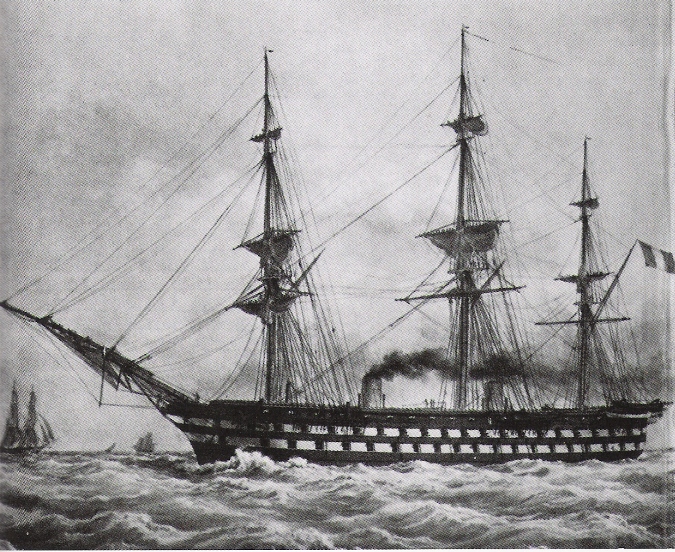
This was a full-fledged 90-gun warship, with two complete and one incomplete upper decks, three masts, 240ft of lenght, 55ft of width, 27ft of draught, for a 5000 ton displacement. The steam engine was seen as an auxiliary one, a 2-cyl Indret geared, of 960 nhp (574 ihp), which gave excellent performances, thanks to the fine hydrodynamic qualities of the hull. Artillery comprised sixty 30-pdr (220 mm), the standard caliber of the time. The crew rose to 910 men.
Although original plans included iron plating, the urge was such that a more classical configuration was chosen, with a wooden hull protected by a 8 inches thick layers of teck and oak timbers. Also the sailing qualities defined by naval engineer Jean-Michel Sané were kept unchanged, combining the best of both worlds. The result was a landmark in naval history.
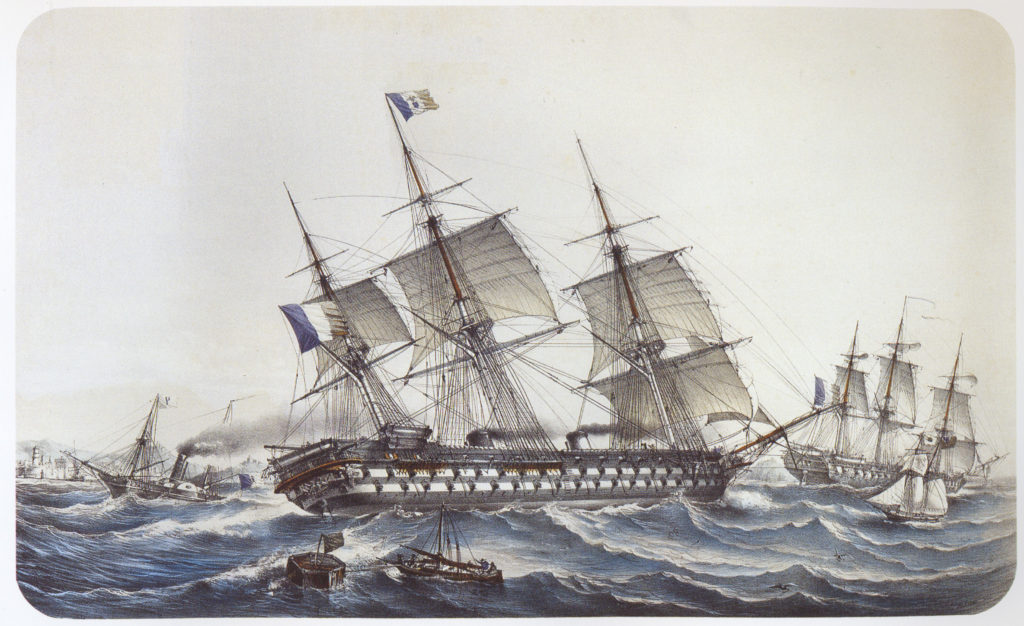
The Napoleon was in fact, the first of a serie of height other sister-ships, comprising also Arcole, Algésiras, Redoutable, Impérial, Ville de Nantes, Ville de Bordeaux, Ville de Lyon, and Intrépide. 28 ships of the line were also converted on the stocks, while the British built 18 new comparable ships and converted 41 others.

Author’s rendition of the Napoleon
The naval arms race between France and Great Britain reached its peak ten years later, when the second concept of the brillant Dupuy de Lôme was unleashed, as the Gloire, first sea-going ironclad ever, pushing the boundaries of naval warfare to new levels, definitely nailing the coffin of the century-old era of tall sailing ships of the line, and open that of the modern battleships which will rules the seas until 1945…
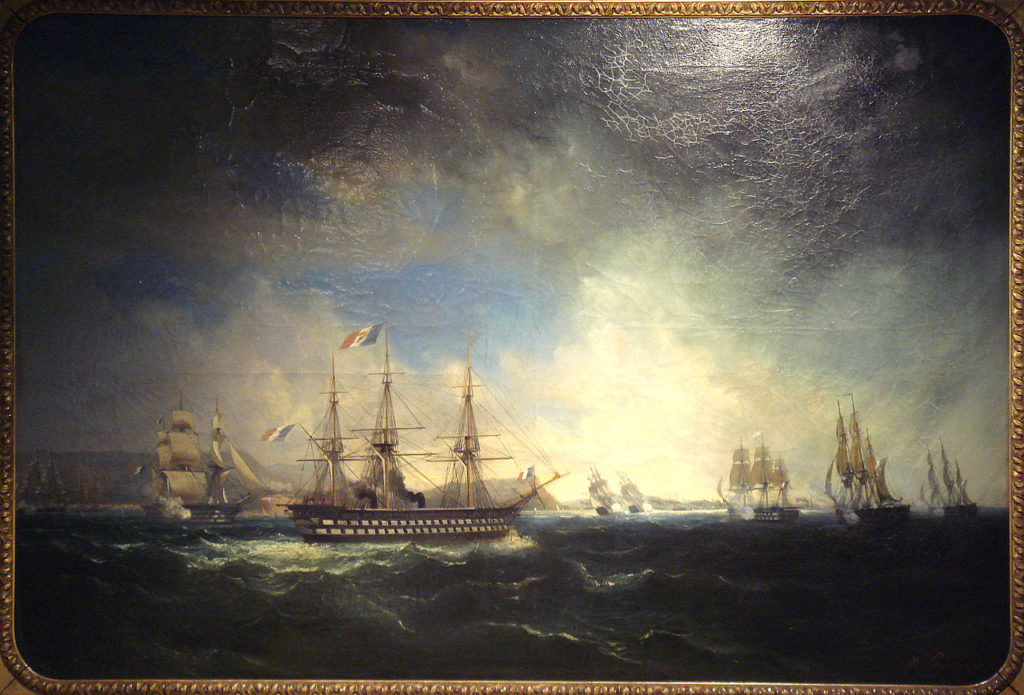
Read More
Books
Napoleon (90 guns), the first purpose-designed screw line of battleships », Steam, Steel and Shellfire, Conway’s
Maurice Daumas, Histoire Générale des Techniques. Tome III l’expansion du machinisme, Paris, PUF, 1968
Service Historique de la Défense, « Série 5I – Navires Divers – Plans de anvires et de matériels Navals 1800 – 1952
Links
On troisponts.net/
On fr.wikipedia.org
NAVIRES DIVERS PLANS DE NAVIRES ET DE MATERIELS NAVALS 1800 – 1952
Drawings reconstructed
Model Kits

IMAI Kagaku 1/150 (no longer available)
HiSModel 1/150


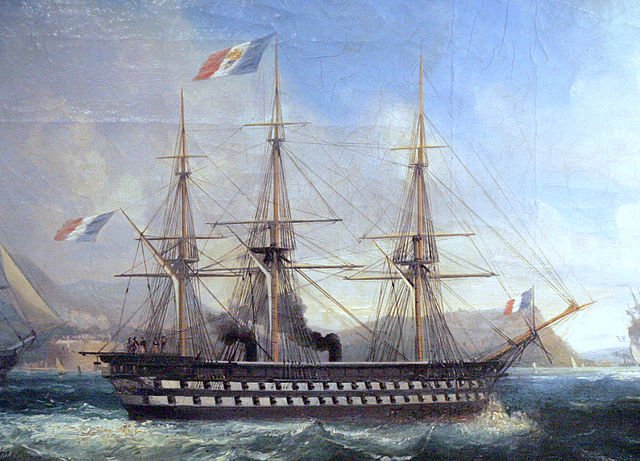

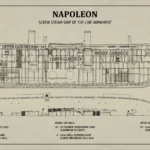
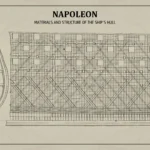
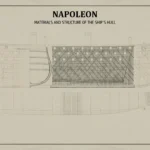
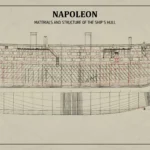
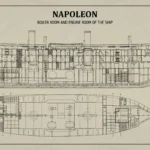
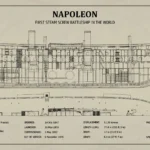
 Latest Facebook Entry -
Latest Facebook Entry -  X(Tweeter) Naval Encyclopedia's deck archive
X(Tweeter) Naval Encyclopedia's deck archive Instagram (@navalencyc)
Instagram (@navalencyc)





 French Navy
French Navy Royal Navy
Royal Navy Russian Navy
Russian Navy Armada Espanola
Armada Espanola Austrian Navy
Austrian Navy K.u.K. Kriegsmarine
K.u.K. Kriegsmarine Dansk Marine
Dansk Marine Nautiko Hellenon
Nautiko Hellenon Koninklije Marine 1870
Koninklije Marine 1870 Marinha do Brasil
Marinha do Brasil Osmanlı Donanması
Osmanlı Donanması Marina Do Peru
Marina Do Peru Marinha do Portugal
Marinha do Portugal Regia Marina 1870
Regia Marina 1870 Nihhon Kaigun 1870
Nihhon Kaigun 1870 Preußische Marine 1870
Preußische Marine 1870 Russkiy Flot 1870
Russkiy Flot 1870 Svenska marinen
Svenska marinen Søværnet
Søværnet Union Navy
Union Navy Confederate Navy
Confederate Navy Armada de Argentina
Armada de Argentina Imperial Chinese Navy
Imperial Chinese Navy Marinha do Portugal
Marinha do Portugal Mexico
Mexico Kaiserliche Marine
Kaiserliche Marine 1898 US Navy
1898 US Navy Sovietskiy Flot
Sovietskiy Flot Royal Canadian Navy
Royal Canadian Navy Royal Australian Navy
Royal Australian Navy RNZN Fleet
RNZN Fleet Chinese Navy 1937
Chinese Navy 1937 Kriegsmarine
Kriegsmarine Chilean Navy
Chilean Navy Danish Navy
Danish Navy Finnish Navy
Finnish Navy Hellenic Navy
Hellenic Navy Polish Navy
Polish Navy Romanian Navy
Romanian Navy Turkish Navy
Turkish Navy Royal Yugoslav Navy
Royal Yugoslav Navy Royal Thai Navy
Royal Thai Navy Minor Navies
Minor Navies Albania
Albania Austria
Austria Belgium
Belgium Columbia
Columbia Costa Rica
Costa Rica Cuba
Cuba Czechoslovakia
Czechoslovakia Dominican Republic
Dominican Republic Haiti
Haiti Hungary
Hungary Honduras
Honduras Estonia
Estonia Iceland
Iceland Eire
Eire Equador
Equador Iran
Iran Iraq
Iraq Latvia
Latvia Liberia
Liberia Lithuania
Lithuania Mandchukuo
Mandchukuo Morocco
Morocco Nicaragua
Nicaragua Persia
Persia San Salvador
San Salvador Sarawak
Sarawak Uruguay
Uruguay Venezuela
Venezuela Zanzibar
Zanzibar Warsaw Pact Navies
Warsaw Pact Navies Bulgaria
Bulgaria Hungary
Hungary

 Bundesmarine
Bundesmarine Dutch Navy
Dutch Navy Hellenic Navy
Hellenic Navy Marina Militare
Marina Militare Yugoslav Navy
Yugoslav Navy Chinese Navy
Chinese Navy Indian Navy
Indian Navy Indonesian Navy
Indonesian Navy JMSDF
JMSDF North Korean Navy
North Korean Navy Pakistani Navy
Pakistani Navy Philippines Navy
Philippines Navy ROKN
ROKN Rep. of Singapore Navy
Rep. of Singapore Navy Taiwanese Navy
Taiwanese Navy IDF Navy
IDF Navy Saudi Navy
Saudi Navy Royal New Zealand Navy
Royal New Zealand Navy Egyptian Navy
Egyptian Navy South African Navy
South African Navy






























 Ukrainian Navy
Ukrainian Navy dbodesign
dbodesign